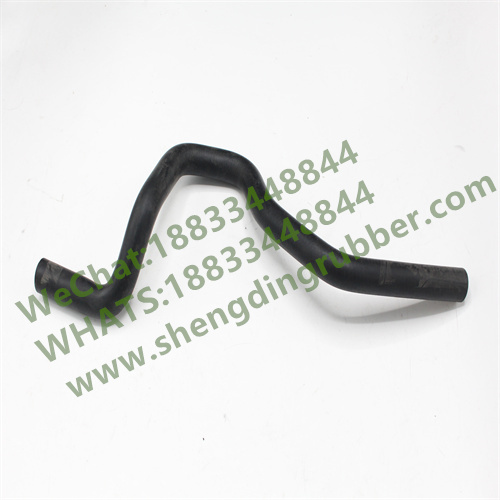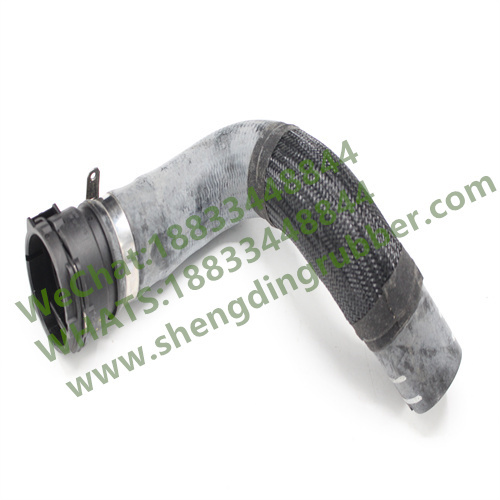Essential Insights into Hyundai KIA Radiator Hoses: A Comprehensive Overview
Release Time:
Apr 04,2025
When it comes to the efficient functioning of a vehicle's cooling system, the role of Hyundai KIA radiator hoses cannot be overstated. These hoses are essential components that facilitate the circulation of engine coolant between the engine and the radiator, ensuring that the engine maintains an optimal operating temperature. Understanding the construction, function, and potential issues associate
When it comes to the efficient functioning of a vehicle's cooling system, the role of Hyundai KIA radiator hoses cannot be overstated. These hoses are essential components that facilitate the circulation of engine coolant between the engine and the radiator, ensuring that the engine maintains an optimal operating temperature. Understanding the construction, function, and potential issues associated with these hoses is crucial for automotive professionals, mechanics, and vehicle owners alike.
Hyundai KIA radiator hoses are typically constructed from durable materials, such as reinforced rubber or silicone, designed to withstand high temperatures and pressures. The upper and lower radiator hoses serve distinct roles; the upper hose carries hot coolant from the engine to the radiator, while the lower hose returns the cooled liquid back to the engine. Regular inspection of these hoses is vital, as any signs of wear, such as cracking, bulging, or soft spots, can lead to coolant leaks, overheating, and potentially severe engine damage.
It's essential to note that maintaining the integrity of Hyundai KIA radiator hoses involves more than just visual inspections. Routine checks on the coolant level and quality are also crucial. Contaminated or degraded coolant can accelerate hose deterioration, leading to premature failure. Therefore, using the appropriate coolant recommended for Hyundai and KIA vehicles can significantly extend the lifespan of the radiator hoses and the overall cooling system.
In addition to regular inspections, it's advisable to replace Hyundai KIA radiator hoses at specified intervals, as outlined in the vehicle's maintenance schedule. While some hoses may last several years, factors such as high mileage, extreme temperatures, and exposure to harmful substances can shorten their lifespan. If replacement is necessary, it’s important to ensure that the new hoses are compatible with the specific model of Hyundai or KIA, as dimensions and connection types can vary.
When it comes to installation, a proper fit is crucial. Loose or improperly fitted hoses can lead to leaks or disconnections, resulting in engine overheating or coolant loss. Utilizing high-quality clamps and ensuring they are secured adequately will help maintain a leak-free system.
In conclusion, Hyundai KIA radiator hoses play a vital role in the cooling system of vehicles. Understanding their function, conducting regular inspections, and adhering to maintenance schedules can significantly enhance vehicle performance and reliability. By prioritizing the health of these hoses, automotive professionals and vehicle owners can ensure that their engines run smoothly and efficiently for years to come.
Hyundai KIA radiator hoses are typically constructed from durable materials, such as reinforced rubber or silicone, designed to withstand high temperatures and pressures. The upper and lower radiator hoses serve distinct roles; the upper hose carries hot coolant from the engine to the radiator, while the lower hose returns the cooled liquid back to the engine. Regular inspection of these hoses is vital, as any signs of wear, such as cracking, bulging, or soft spots, can lead to coolant leaks, overheating, and potentially severe engine damage.
It's essential to note that maintaining the integrity of Hyundai KIA radiator hoses involves more than just visual inspections. Routine checks on the coolant level and quality are also crucial. Contaminated or degraded coolant can accelerate hose deterioration, leading to premature failure. Therefore, using the appropriate coolant recommended for Hyundai and KIA vehicles can significantly extend the lifespan of the radiator hoses and the overall cooling system.
In addition to regular inspections, it's advisable to replace Hyundai KIA radiator hoses at specified intervals, as outlined in the vehicle's maintenance schedule. While some hoses may last several years, factors such as high mileage, extreme temperatures, and exposure to harmful substances can shorten their lifespan. If replacement is necessary, it’s important to ensure that the new hoses are compatible with the specific model of Hyundai or KIA, as dimensions and connection types can vary.
When it comes to installation, a proper fit is crucial. Loose or improperly fitted hoses can lead to leaks or disconnections, resulting in engine overheating or coolant loss. Utilizing high-quality clamps and ensuring they are secured adequately will help maintain a leak-free system.
In conclusion, Hyundai KIA radiator hoses play a vital role in the cooling system of vehicles. Understanding their function, conducting regular inspections, and adhering to maintenance schedules can significantly enhance vehicle performance and reliability. By prioritizing the health of these hoses, automotive professionals and vehicle owners can ensure that their engines run smoothly and efficiently for years to come.
Key words:
What Else Might You Learn?







